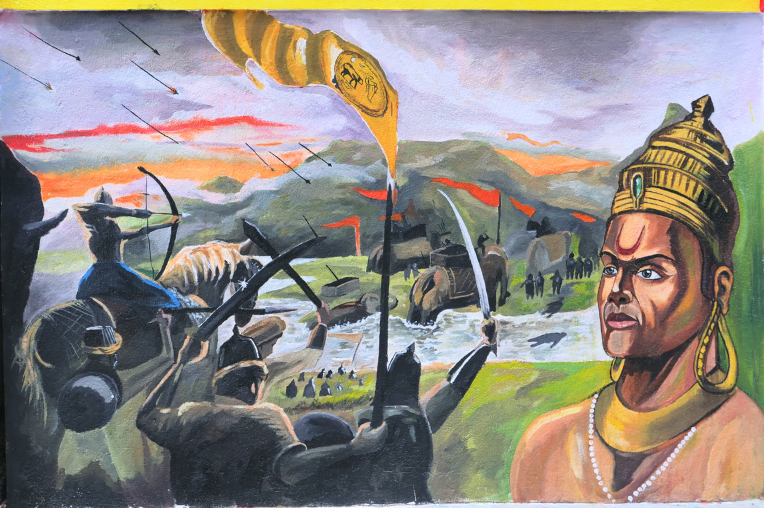Pulakeshin II
Pulakeshi II (IAST: Pulakeśhi r. c. 610–642 CE) popularly known as Immaḍi Pulakeśi, was the greatest Chalukyan Emperor who reigned from Vatapi (present-day Badami in Karnataka, India). During his reign, the Chalukya Empire expanded to cover most of the Deccan region in peninsular India.
A son of the Chalukya monarch Kirttivarman I, Pulakeshin overthrew his uncle Mangalesha to gain control of the throne. He suppressed a rebellion by Appayika and Govinda, and decisively defeated the Kadambas of Banavasi in the south. The Alupas and the Gangas of Talakadu recognized his suzerainty. He consolidated the Chalukya control over the western coast by subjugating the Mauryas of Konkana. His Aihole inscription also credits him with subjugating the Latas, the Malavas, and the Gurjaras in the north.
The most notable military achievement of Pulakeshin was his victory over the powerful northern emperor Harshavardhana, whose failure to conquer the Chalukyan territories to the south is attested by the Chinese pilgrim Xuanzang. In the east, Pulakeshin subjugated the rulers of Dakshina Kosala and Kalinga. After defeating the Vishnukundina monarch, he appointed his brother Vishnu-vardhana as the governor of eastern Deccan; this brother later established the independent Eastern Chalukya dynasty of Vengi. Pulakeshin also achieved some successes against the Pallavas in the south, but was ultimately defeated during an invasion by the Pallava monarch Narasimhavarman I.

